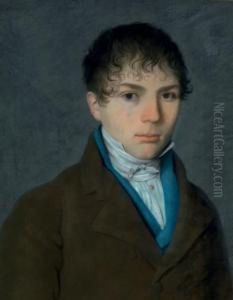Pierre Petitot Paintings
Pierre Petitot was a distinguished French sculptor born in 1727. His career unfolded during a period rich in artistic evolution, the 18th century, which saw the transition from the Baroque to the Neoclassical style. Despite the limited information about his early life, it is known that Petitot emerged from a family with artistic roots, which likely provided him with an environment conducive to nurturing his talents from a young age.
Petitot's body of work primarily consisted of decorative sculptures, busts, and monuments that exhibit the elegance and refinement characteristic of the French artistic sensibility of his time. He was adept at capturing the grace and delicacy of the human form, a skill that made his work highly sought after by the aristocracy and the French court. His sculptures often reflected the ideals of the Enlightenment, emphasizing reason, naturalism, and a harmony between form and content.
Throughout his career, Pierre Petitot contributed significantly to the embellishment of several important buildings and gardens in France. His ability to blend artistic innovation with classical themes allowed his work to stand out, earning him commissions that would cement his reputation as a master sculptor. Despite the political turmoil that France experienced towards the end of his life, including the French Revolution, Petitot's legacy as an artist remained untarnished.
Petitot passed away in 1791, leaving behind a rich portfolio of works that continue to be admired for their beauty and technical precision. His contributions to French sculpture have been acknowledged by art historians and critics, who view him as a pivotal figure in the transition towards Neoclassicism. Though not as widely recognized as some of his contemporaries, Pierre Petitot's artistry and influence on the sculptural landscape of his time are undeniable.
